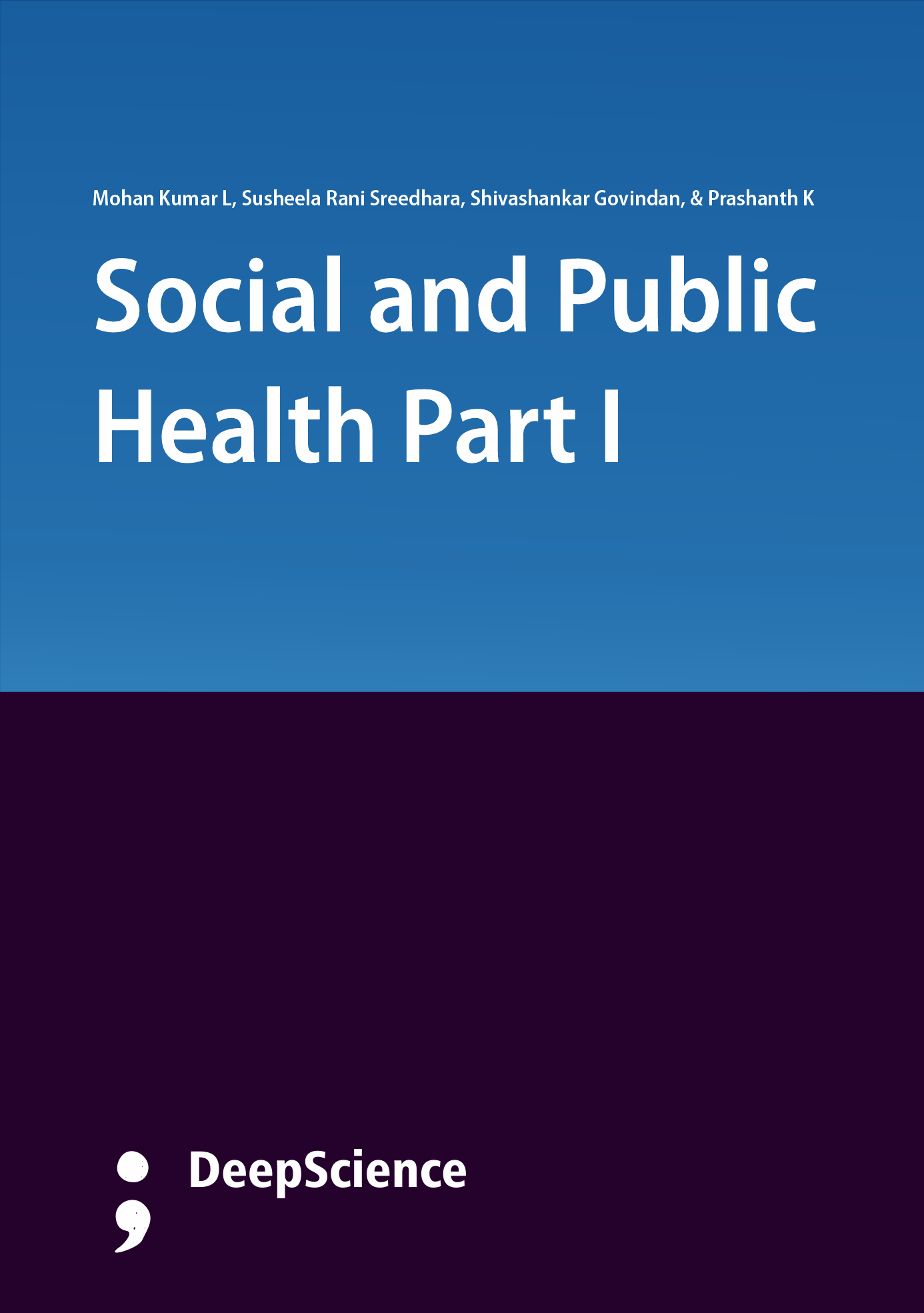Social and Public Health Part I
Keywords:
Public Health, Prevention, Health Promotion, Health Policy, Health Education, Epidemiology, Health EquitySynopsis
Health is not just the absence of disease—it is the foundation of a meaningful and productive life. In today’s world, where communities face both new and long-standing health challenges, understanding the social and public health aspects of care has never been more important.
This book was written with students in mind, to make the subject clear, approachable, and relevant to everyday practice. Each chapter has been arranged in a simple, logical flow, covering the basics of health and disease, preventive medicine, nutrition, hygiene, and the national health programs that shape the well-being of our country. Real-world examples and practical insights have been included to help readers connect theory with practice.
At its heart, this book is more than an academic resource—it is an invitation to think critically, to care deeply, and to contribute meaningfully to society’s health. We hope it will encourage learners to view public health not only as a subject to study, but as a responsibility to embrace.
References
Braveman, P. (2014). Health disparities and health equity: Concepts and measurement. Annual Review of Public Health, 35, 173-190.
Chen, H., Gao, L., & Xie, X. (2010). Evaluation of health promotion programs: A comprehensive review of methods and approaches. Health Education Research, 25(4), 789-803.
Farmer, P., Nizeye, B., Stulac, S., & Keshavjee, S. (2013). Structural violence and clinical medicine. PLoS Medicine, 3(10), e449.
Galea, S., Ahern, J., & Karpati, A. (2011). Public health in the 21st century. Journal of Public Health, 33(2), 157-162.
Green, L. W., & Glasgow, R. E. (2006). Evaluating the relevance, generalization, and applicability of research: Issues in external validation and translation methodology. Evaluation & the Health Professions, 29(1), 126-153.
Gordis, L. (2014). Epidemiology (5th ed.). Elsevier Health Sciences.
Kawachi, I., Subramanian, S. V., & Almeida-Filho, N. (2010). A glossary for health inequalities. Journal of Epidemiology & Community Health, 54(9), 643-648.
Mark, M. M., Henry, G. T., & Julnes, G. (2000). Evaluation: An integrated framework for understanding, guiding, and improving policies and programs. Sage Publications.
Patton, M. Q. (2008). Utilization-focused evaluation (4th ed.). Sage Publications.
Rossi, P. H., Lipsey, M. W., & Freeman, H. E. (2004). Evaluation: A systematic approach (7th ed.). Sage Publications.
Scheirer, M. A. (2005). *Is sustainability possible? A
Andersen, R. M. (1995). Revisiting the Behavioral Model and Access to Medical Care: Does It Matter? Journal of Health and Social Behavior, 36(1), 1-10.
Berkman, L. F., Glass, T., Brissette, I., & Seeman, T. E. (2000). From social integration to health: Durkheim in the new millennium. Social Science & Medicine, 51(6), 843-857.
Finkelstein, J. A., Simpson, L. A., & Keet, C. A. (2007). Effects of air pollution on respiratory disease outcomes. Archives of Pediatric & Adolescent Medicine, 161(11), 1050-1056.
Graham, H. (2007). Social Determinants and Health Inequalities. In Understanding Health Inequalities: Theories and Concepts (pp. 56-75). Open University Press.
Link, B. G., & Phelan, J. C. (2006). Stigma and its public health implications. The Lancet, 367(9509), 528-529.














